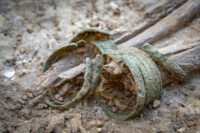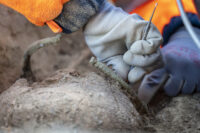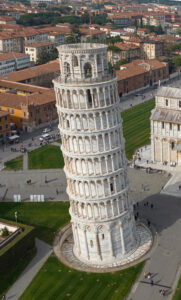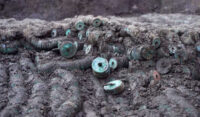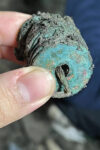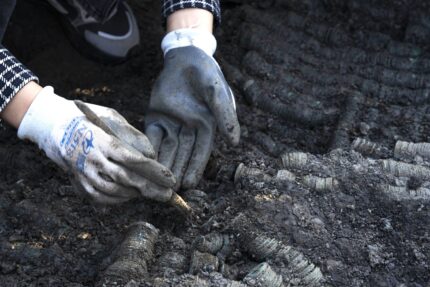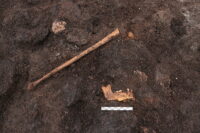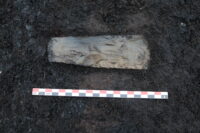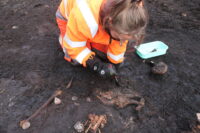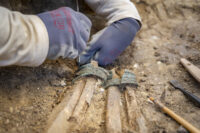 The excavation of a prehistoric necropolis in Aubagne, southeastern France, has unearthed an individual from the 1st millennium B.C. bedecked in copper jewelry.
The excavation of a prehistoric necropolis in Aubagne, southeastern France, has unearthed an individual from the 1st millennium B.C. bedecked in copper jewelry.
The necropolis, in use from around 900 – 600 B.C., bookending the late Bronze and early Iron ages, was first excavated in 2021. At that time, archaeologists unearthed 10 burials, eight of them under a tumulus, and three cremation deposits. This years’ dig encountered three more burials, one under a large tumulus 33 feet in diameter. While the tumulus is notable — it was surrounded by a deep ditch and likely originally marked by a ring of stones — the burial within it was not furnished. The two other burials excavated this season were.
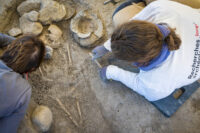 The first of the two contained the skeletal remains of an individual wearing a twisted copper alloy bracelet and a pearl and stone jewel on the left shoulder. Two ceramic pots were buried near the deceased’s head.
The first of the two contained the skeletal remains of an individual wearing a twisted copper alloy bracelet and a pearl and stone jewel on the left shoulder. Two ceramic pots were buried near the deceased’s head.
The second non-tumulus burial is the richest that has been found so far in this necropolis. The person was buried with a tubular torc with rolled terminals around their neck, three bangles on each ankle and three toe rings. Next to the deceased was a brooch and a large ceramic urn.
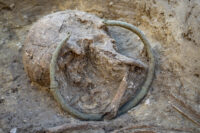 The tumulus and first burial are in close proximity. The third was distant from the other two. Each space was clearly and intentionally delimited with structures, now long-gone. The tumulus and first inhumation are bound by a line of postholes, indicating a linear structure once formed the boundary line of space reserved for the dead. The second burial was delimited by an alignment of stone blocks more than six feet long.
The tumulus and first burial are in close proximity. The third was distant from the other two. Each space was clearly and intentionally delimited with structures, now long-gone. The tumulus and first inhumation are bound by a line of postholes, indicating a linear structure once formed the boundary line of space reserved for the dead. The second burial was delimited by an alignment of stone blocks more than six feet long.
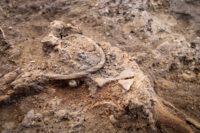 The discovery of these three burials adds significantly to our understanding of the funerary practices of protohistoric southern France. They also reveal that the necropolis extended far beyond archaeologists’ early estimates for the size of the burial ground. The new data indicates the necropolis covered at least 1.3 hectares, and probably extends even further than that.
The discovery of these three burials adds significantly to our understanding of the funerary practices of protohistoric southern France. They also reveal that the necropolis extended far beyond archaeologists’ early estimates for the size of the burial ground. The new data indicates the necropolis covered at least 1.3 hectares, and probably extends even further than that.
